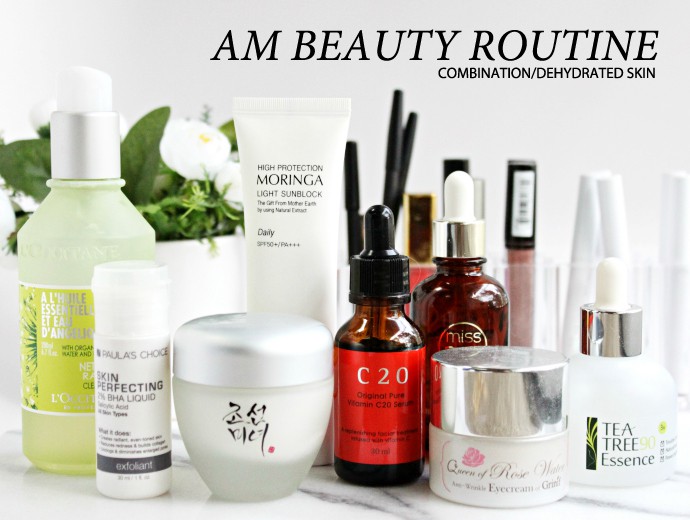
Since I look a little younger than my biological age [I turn 32 in a few weeks], I get a lot of questions about my beauty routine. But as soon as I open my mouth, the person usually regrets they asked, because the products I use go beyond the traditional 3-step routine. So those of you who couldn’t care less about skincare, just go ahead and skip this post entirely. Today I will be talking about a bunch of products I currently use in the AM as well as reasons why I use them with added links to clinical studies where appropriate. I have to break the routine apart into several posts because otherwise this will be a monster essay that nobody has the time to read.
A little disclaimer here: this lineup is what I use when I’m not testing anything. Even if I test a product and end up loving it, it goes into the queue based on the expiration date. That is why you will rarely see products I recently blogged about in my routine; I think it’s common sense to use skincare that expires the soonest. I hope that makes sense!
IMPORTANT: Please, don’t ask me to help pick products for you, this is advice I am not qualified to give. I am just a consumer who also happens to have a beauty blog, and not a licensed dermatologist, cosmetic chemist, or another industry professional. My entire knowledge base consists of Internet research and reading clinical studies for ingredients. Basically, I’m the skincare version of a sketchy WebMD pretend-doctor: I might know things, but you wouldn’t want to consult me with actual health issues. What I can do though is answer any questions you may have about my experience with certain products or about my decision-making process whether to use a product or not.
Without further ado, here’s what a good skin day looks like for my combination/dehydrated skin type.
CLEANSE:
I have a ton of cleansers sent to me for review, and most of them don’t meet my criteria for a good cleanser. However, even if I manage to find a few superior standouts, that’s still too many cleansers in my stash.
HOW TO PICK A GOOD CLEANSER?
Before you ask any more questions, read this post from Skin&Tonics in its entirety. I warned you, this post will be a long read! Really, you should read it because it will change how you look at cleansers, forever. I’m not kidding when I say this post was the turning point in my skincare philosophy, and I still abide by the rules to this day. Long story short [if you absolutely have no time to read S&T post right now]: Multiple studies prove that pH of your cleanser matters more than you realize [link]. They link alkaline cleansers to increased numbers of acne-causing bacteria on the skin [link]. High pH cleansers disrupt the skin’s protective acid mantle, which in turn leads to dryness, irritation [link], and premature skin aging. A good cleanser that will not disrupt the acid mantle should have pH between 5.0 and 5.5. This low pH approach is recommended for all skin types.
It’s never too late to overhaul your cleansing routine with help of these handy Macherey-Nagel 92110 0-14 pH Indicator Strips [$14,95, available here]. That’s what I use, because I heard they are the most accurate among paper strips. As a fun experiment, take a few strips to with you to Sephora and be amazed how many high end cleansers are actually terrible for your skin.
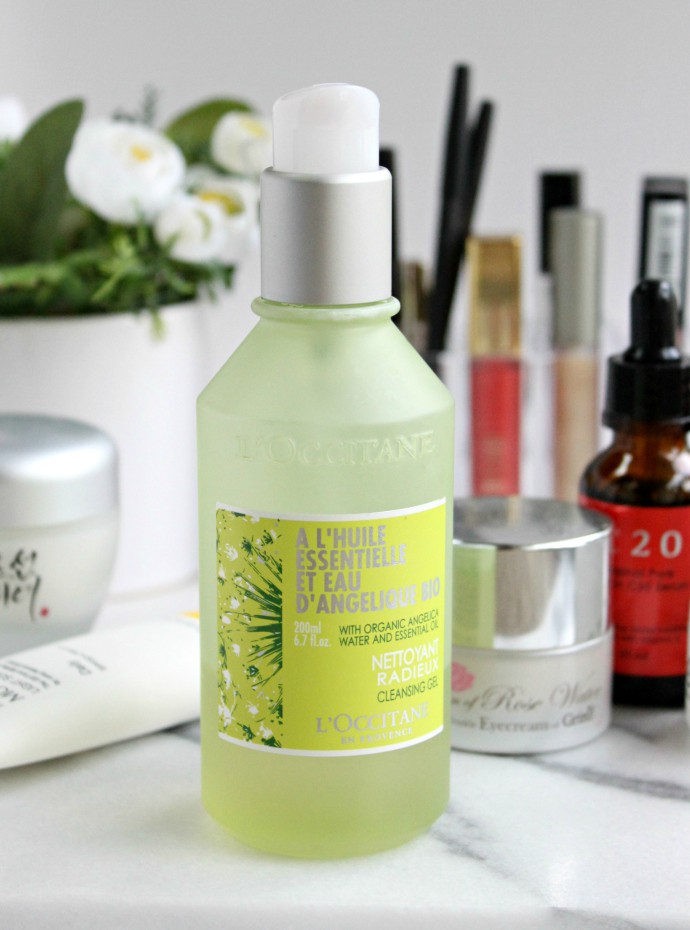
My AM cleansing routine consists of 1 step, I actually use more products in the evening:
1 // FOAM CLEANSER. This is where most of the pH crimes occur, as low pH cleansers are more expensive to formulate so many companies [even high end ones] skimp on the ingredients. At this time I’m using, or rather just trying to finish up, L’Occitane Angelica Cleansing Gel [$24, available here], which is on its last leg because it expires very soon. I call it the worst of the best, because it’s still a lot better than most cleansers on the market, but worse than some my other favorites. The reason I am not completely satisfied with it is the use of Methylisothiazolinone in the formula, which is a pretty scary preservative. It’s not your hipster paraben scare [FYI, I do not fear parabens and I may even write a post explaining why, but it’s not on my to-do list anytime soon], this particular molecule was proven to cause neurotoxicity in lab rats and people who experienced prolonged exposure to it either from their workspace of by using household cleaning products with that ingredient [link]. In this case, a very miniscule amount is used for its antimicrobial properties to preserve botanical extracts, and I had zero irritations from using it whatsoever. In an effort to appeal to paraben-hating people companies are forced to look for other alternatives that are not necessarily safer. This study suggests that in “rinse-off cosmetic products, a concentration of 15 ppm (0.0015%) Methylisothiazolinone is considered safe for the consumer from the view of induction of contact allergy”, but I still wouldn’t leave my cleansers on the skin longer than a minute just because I’m paranoid like that. I’ll take parabens any day over this scary stuff, just so you know.
Why do I like it? It smells nice and has pH 5.0 skin-friendly formula that gently removes impurities and doesn’t dry out my face. That preservative though…
When I hear someone mention that they don’t use bar soaps because they’re harsh, and yet that person’s cleanser of choice is as alkaline, I die a little on the inside. The skincare geek in me is screaming to unleash the knowledge on that poor unsuspecting soul, but at the same time, like I said above, I’m not exactly qualified to give advice, nor is it any of my business, so I just don’t say anything.
EXFOLIATE:
Usually when people hear the word exfoliator, they assume I’m talking about scrubs. Not quite! While I do indulge in scrubbing sessions from time to time, the primary way of exfoliating my skin will always be chemical. Different acids are active at different pH so it’s important to make sure the skin is clean and dry at the time of the application. Applying more than one acid at once is generally not a very good idea, because you are either risking major irritation or some of the acids will simply deem the others ineffective. To make sure I give both acids enough time in the spotlight to make a difference, I wait 15 minutes after applying each one before proceeding with the next step. Yes, that is 30 minutes just for the acids. Someone might say they don’t have that kind of time to spend on just a small part of their skincare routine, well I do and you asked to see what my routine is like, so here it is. I decided long ago that skin is going to be an important investment for me, so I always find time to take proper care of it regardless of my schedule.
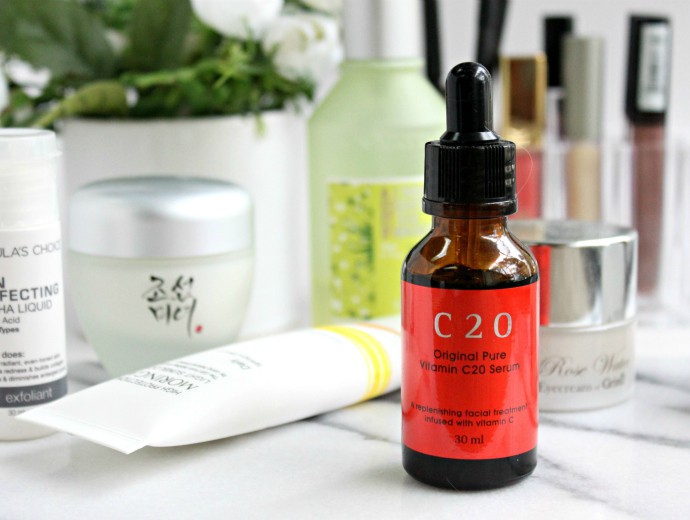
1 // VITAMIN C. The first acid I use right after cleansing is OST C20 Original Pure Vitamin C20 Serum [$14.99, available here with free Shipping from Korea]. I spread a few drops over dry clean skin and leave it on for 15 minutes. I also apply a little bit of eye cream so that my eye area doesn’t dry out [I’ll talk about the product later in this post]. After 15 minutes are up, I wash my face again, pat it dry, and apply the next acid. One thing about OST20 you need to know is that it oxidizes like crazy. The active ingredient L-ascorbic Acid is one of the most unstable forms of Vitamin C. It is so sensitive to light and oxygen, the serum must be kept in the fridge in a tightly sealed bottle at all times when not in use. Fresh serum looks clear, with slightly yellowish tint, and smells like fresh orange zest. When OST20 oxidizes, it looks orange or even dark brown, and starts smelling like burnt caramel.
The reason why I don’t use this serum after it turns orange is simple. L-ascorbic Acid is not a gentle acid to begin with, and it does cause irritations for some people. Once it oxidizes, the chance of developing an irritation or allergic reaction increases by a large margin. Additionally, the oxidized active is not nearly as efficient, so I’d be putting my skin at risk for questionable results. Now, why would anyone do that, right?
Why do I like it? It’s dirt cheap, and very effective at erasing post-acne scarring, hyperpigmentation, sun spots, freckles, and general skin discolorations. Even if I never end up finishing the bottle before the product oxidizes, the price is low enough so it really doesn’t matter.
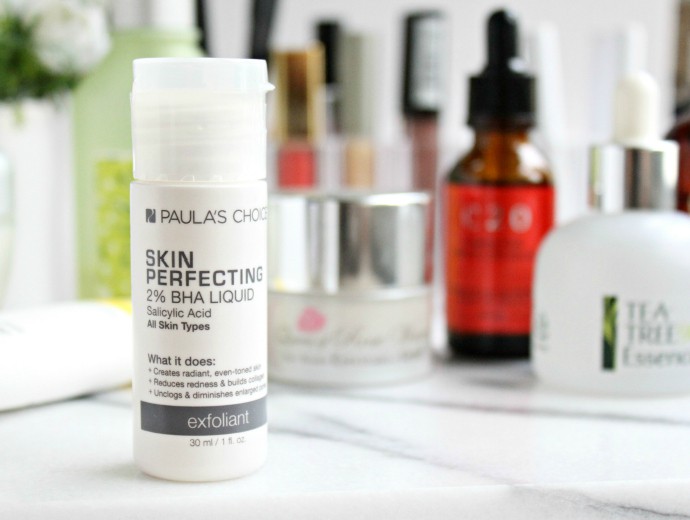
2 // AHA/BHA. The second step is usually reserved for other AHAs and BHAs. I currently don’t use any AHAs other than the Vitamin C serum above [Ascorbic Acid is considered an AHA] in my routine just because I don’t feel the need for them since my skin already feels soft and well-exfoliated. Whenever it starts looking a bit rough and bumpy is when I add some Glycolic Acid to smooth things out [Neostrata/Exuviance and Glytone are two of my favorite mainstream brands for AHAs]. Anyhow, at this time I only use Paula’s Choice Skin Perfecting 2% BHA Liquid Exfoliant [$28, available here] to keep my hormonal breakouts at bay and to de-congest the pores that tend to get clogged in the summer. I put on some eye cream again, swipe my skin with BHA exfoliant and wait another 15 minutes or so, then proceed to the next step without washing my face this time.
Why do I like it? The formula is pretty simple and very effective. It reminds me of a fresh pharmacy-made 2% Salicylic Acid solution/toner I used to love in my teens. The pharmacist literally mixed it from fresh ingredients according to the recipe while I was watching, it was a pretty cool experience! Did you guys have apothecaries like that in the US or is that a Russian thing? Let me know, I’m curious!
HYDRATE:
Getting this step right is super important for me because my skin is dehydrated. I make sure to thoroughly quench it with water-based serums and essences that are also enriched with antioxidants, peptides, and skin-softening ingredients. I couldn’t care less if my essences are not loaded with anti-aging actives, after all I take care of that aspect with rinse-off acids, SPF, and a couple products I use at night. This step is mainly to ensure that every inch of my face and neck has enough water to bounce back every time I frown, squint, or laugh throughout the day.
Depending on my skin’s needs that day I end up using various products, sometimes adding one or more essence to the mix. However, lately I downsized to just two, because it’s been pretty hot and humid lately, so my skin was doing alright with water retention.
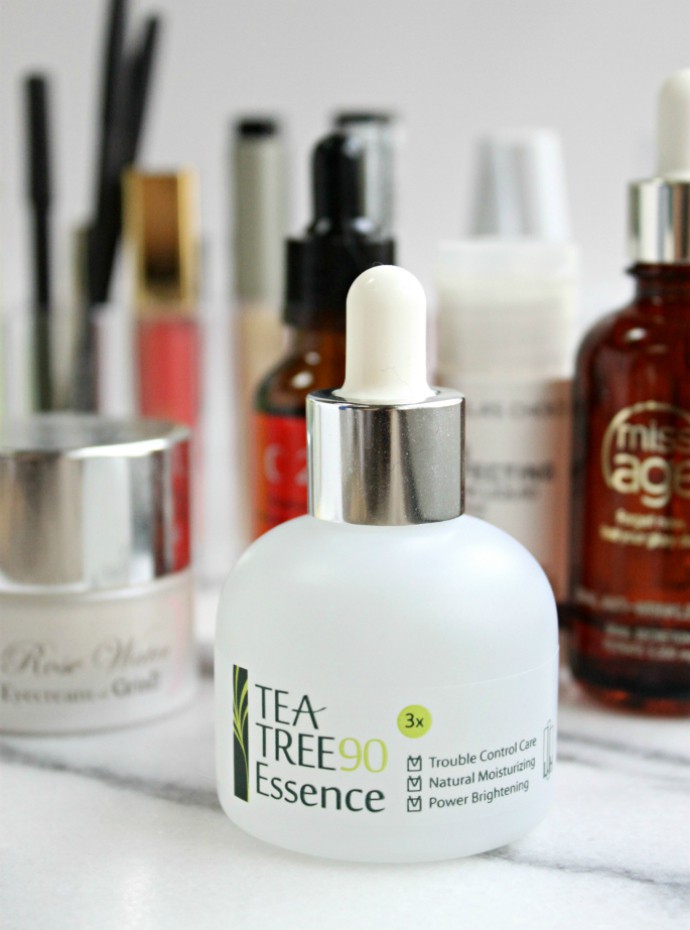
1 // TREAT. You could say this is my unofficial step 2 to treat breakouts. Tea tree oil is a known antiseptic that also has astringent and anti-inflammatory properties, and LJH Tea Tree 90 Essence [$45, available here] is made of 90% tea tree water with the rest of the ingredients taking the remaining 10%, so it’s almost as good as rubbing the oil on your skin, except with very little risk of developing irritation. I’m actually not sure how many of these I used up at this point, but I remember at least 3 empty bottles, one of which I finished earlier this month. I apply one full dropper directly to my face and pat in with bare fingers until the essence is mostly absorbed. The patting method is considered to be more effective than simply spreading/smudging the products over your face.
Why do I like it? The formula is very clean and highly effective. After I started using this essence I barely have breakouts anymore. It also seems to reduce the redness on my face from other irritations that occur from time to time, completely unrelated to acne. This essence is pricey compared to other high quality Korean skincare products, but after experiencing the amazing results firsthand I think that it’s worth it. That’s why whenever I see it on sale, I buy as many bottles as I can afford at the time, because it’s just such a great product.

2 // REPAIR. One word – SNAILS! Ever since discovering the wonderful world of Korean skincare I can’t imagine my routine without some kind of a snail mucin product. I know not everyone is on board with it in the West yet, but in Asia snail slime skincare is as common as Vaseline. There is a good reason for that, too. While Asian market is filled with ingredients that were seemingly selected just for the sake of that novelty wow factor, snail slime filtrate has been used in cosmetics for a long time. And what a wondrous ingredient it is! Snail slime filtrate is loaded with skin-loving proteins, antioxidants, and elastin. It’s also been clinically proven to promote skin healing [link], which is perfect for recovering after those acid peels and just a day’s worth of environmental irritants. My current slimy essence of choice is miss age Snail Anti Wrinkle Serum [$47 for 1.7 oz, only available in Korea], a sublime serum/ampoule with the consistency of honey. The ingredient list alone is longer than War & Peace, and in this case that’s a good thing, because almost all of them are natural extracts. Damn, Daniel!
Why do I like it? This serum makes my skin feel instantly quenched and soothed, and I only need a few drops to get the benefits. Even though it feels very sticky coming straight from the bottle, this slimy wonder spreads well and melts into the skin. The formula is very gentle, so I even use it for my eye area.
SEAL IN:
One thing about hydrating water-based serums and essences: they evaporate before they could do the skin any good if not sealed with an occlusive. An occlusive is any product in your beauty arsenal that has a lot of emollients or oils in the formula. Occlusives are used to create a layer on top of the skin that increases water retention; think glycerin, petroleum jelly, cocoa butter, etc…
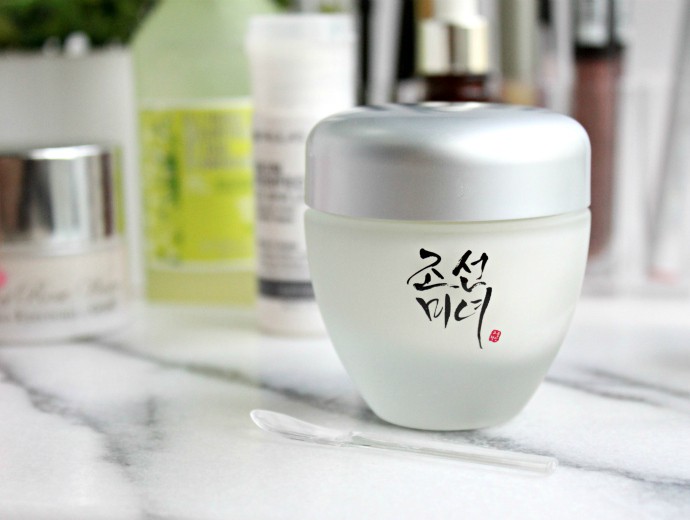
Just so you know, there are several moisturizers and oils I have lined up for this step, but currently I use only one that my combination skin absolutely adores this summer:
1 // CREAM. This time of the year my criteria for a good occlusive moisturizer is simple: it has to be lightweight, hydrating, and preferably contain some additional benefits, like some antioxidants. Beauty of Joseon Dynasty Cream [$25, discontinued] is a fantastic option for my combination/dehydrated skin. This gel-cream consistency is moisturizing and lightweight at the same time. It came highly recommended by several kbeauty bloggers who have similar skin type to mine, so I bought 3 jars sight unseen. What sounded like a dumb move at first, in retrospect I’m glad I bought so many. Soon after my order arrived I found out that this cream has been discontinued, so now it’s nearly impossible to find a place to buy it. Unfortunately, that also means I won’t be able to restock it once my supply runs out.
The company never had much of an online presence, so I had to hunt down the ingredient list from people who actually translated the label from Korean only to find the full list on Memebox.com. I won’t be copy-pasting the whole thing, but just so you know the formula doesn’t seem to contain any bad irritants. On the contrary, it’s loaded with dozens of good things like niacinamide high up on the list, ceramides, EGF, shea butter, and tons of botanical extracts that work as antioxidants.
Why do I like it? Beauty of Joseon Dynasty Cream seems to be the perfect occlusive for my combination/dehydrated complexion. It looks rich in the jar, but my face just drinks it up so I’m never left with oily and sticky skin.
EYE CARE:
I wasn’t sure where to put an eye cream on this list, because I tend to use it whenever I feel like it. As I mentioned above, I apply it when I wait for my chemical peels to work. I also slather it on either after the essences/serums or after my occlusive moisturizer. After all, my eye cream is an occlusive, too. There is a well-known beauty professional who doesn’t think that we need a separate eye product at all. I respectfully disagree with her opinion, because at least in my case the skin on my face is very different from the skin around the eye area. If I tried using my regular moisturizer then I would be left with very dry eyelids, and vice versa if I used my eye cream all over my face very soon I would be looking at hundreds of clogged pores.
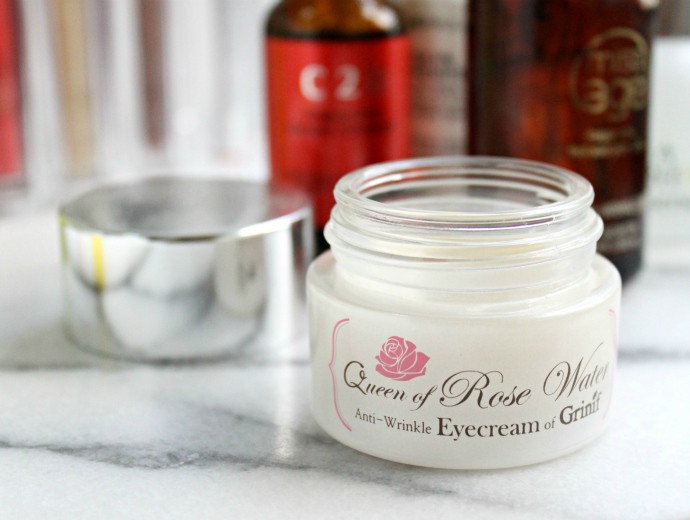
1 // EYES. I featured it in my favorites post in March, and I’m still using the same jar. Grinif Queen of Rose Anti-Wrinkle Eye Cream [$27, only available in Korea] is one of those little known gems that I discovered through Memebox a while back. There are basically no reviews about this one, and a couple that have been posted give it bad ratings due to strong rose fragrance. Honestly, to me this is more of a pro than a con because I adore everything that smells like roses.
Why do I like it? I’ve seen good results after using this cream: my skin instantly bounces back after I smile without forming fine lines, and the whole eye area never feels dry and tight throughout the day.
SPF:
My AM skincare routine is never complete without a nice layer of sunscreen. Some of my peers even subjected me to sunscreen-shaming because I am too diligent about it. Unfortunately, they just don’t realize that photoaging is a real thing, and the main difference between people that look younger than their age vs those who look older is how much time they spent out in the sun [of course there are many other factors, but UV rays is the most common external reason for skin aging]. Using sunscreen every day, regardless of the weather or the season, helps protect collagen reserves and makes the skin look younger. Remember: a tan is a giant scar, not a sign of health; by producing massive amounts of melanin the skin is desperately trying to protect the vital organs, so how can anyone still be convinced that your body’s cry for help is a good thing?
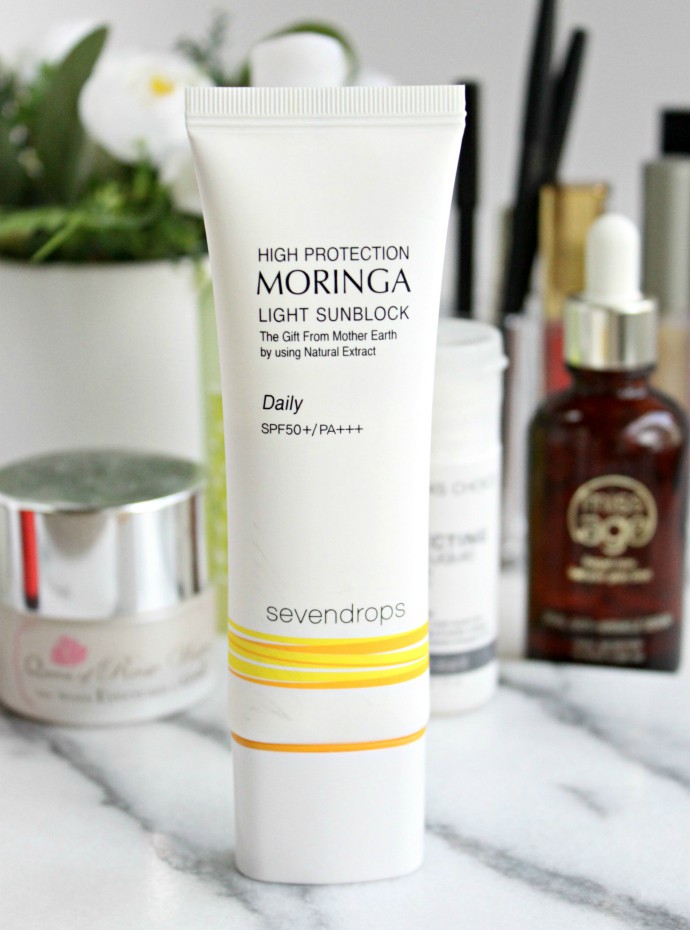
1 // PROTECT. I’m a firm believer that Asian sunscreens are far superior to anything currently available on the Western market. Of course I know of quite a few local standouts, but all of my favorite SPF products happen to be Korean. I don’t think it’s just a weird a coincidence. Fair skin has been a prized quality in Asia for centuries, and that’s roughly how long Eastern women [and men!] have been protecting their skin from the sun to conform to those beauty standards. Asian sunscreens are not just your regular sunblocks, the formulas are sophisticated enough to stand up to any daily cream. Loaded with skin-loving ingredients, Korean sunscreens take skin protection one step further and may even eliminate the need for using other moisturizers. At this time I’m using Sevendrops Moringa Light Sunblock SPF50+ [$28, only available in Korea], which is awesome, but I have several others that are just as good.
Why do I like it? This sunscreen feels like a regular moisturizer: hydrating and very easy to apply. Even though it contains physical sunblock particles, I never see any white cast on my skin. Koreans really know a thing or two about SPF!
Whew, that was a lot, and it’s just my AM routine! Do you understand now why I didn’t even bother including PM products, or any of my occasional treatments like clay masks and such. I will share the rest over the next few weeks, so check back soon to see other parts of my routine.
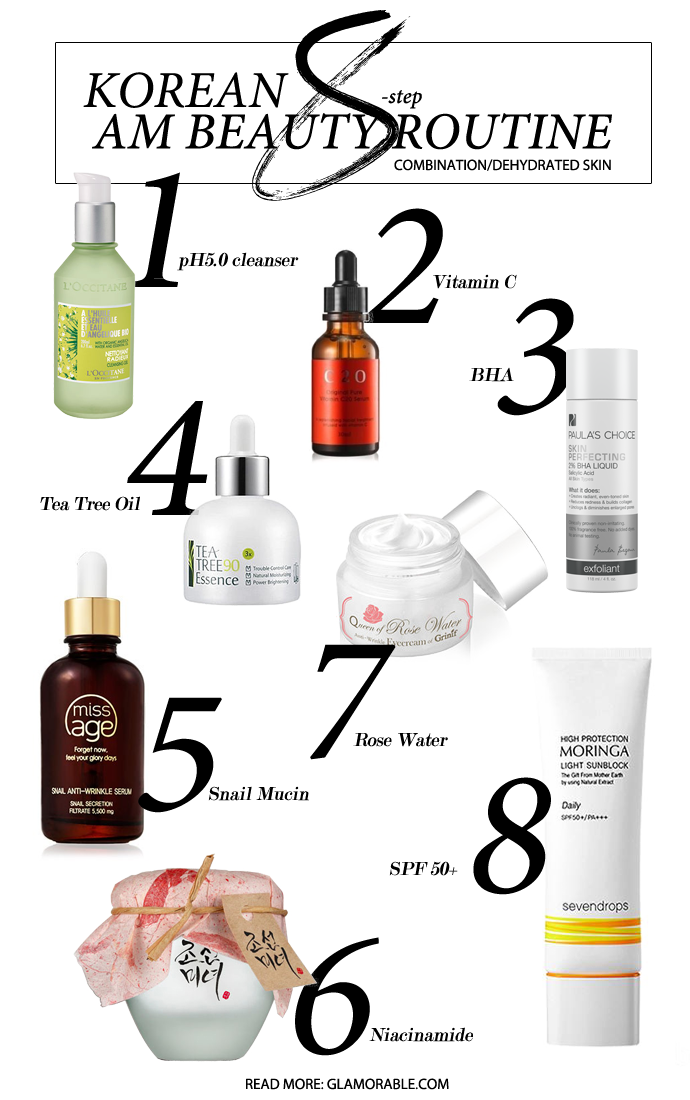
Inspired by my routine? Feel free to save this collage featuring all of the steps to your Pinterest board!
P.S.: Totally random thought, but I just realized that I’m not using any PR samples in this routine, these are all the products I purchased myself.
How many steps are in your AM beauty routine? How do you choose products to use? Have you tried anything from my list? Let me know in the comments below!
Disclosure: This post features products purchased by Glamorable and may contain affiliate or referral links. For more details about my product review policy, copyright, and information about affiliate links, please refer to Disclosures & Content Use page.


Awesome! This is so beautifully detailed! My AM routine is just cleanse-BHA-mist-snail-moisture-SPF since I’m always running late and can’t let the Vitamin C sit. The Miss Age snail broke me out, but Mizon’s three ampoules never do, so I swear by the brown, the gold and the black versions – which I vow have healed my atrophic scars. I’m going to test out starfish next month.
Wonderful post! I have to have a good Vitamin C serum. Love the Paula’s Choice line!
Great post! I cleanse and use a moisturizer with SPF, or a moisturizer and a foundation with SPF.
I love a good vit C serum.
I’m very impressed with your knowledge about skincare. It shows on your beautiful skin.
Great post! As Aesthetic RN, I am impressed with your skincare ingredient knowledge. I’ll give you A+++
I had to laugh at the “sketchy web md dr” comment. you are much more knowledgeable than that!! This is a great routine. I love that you are so into your skin care! The tea tree oil essence is something I know you’ve mentioned before, and I have been meaning to pick that up! Thanks for this awesome list. Can’t wait to see your other posts like this!
Great post! It was very interesting to read about your skin care routine and it seems that your routine works well because your skin looks flawless. I will have to try some of the products you mentioned here!
We have different skin types, but I’m still fascinated by the products you use and how you talk about them. Teach me, ‘sketchy web md’ guru! lol.

